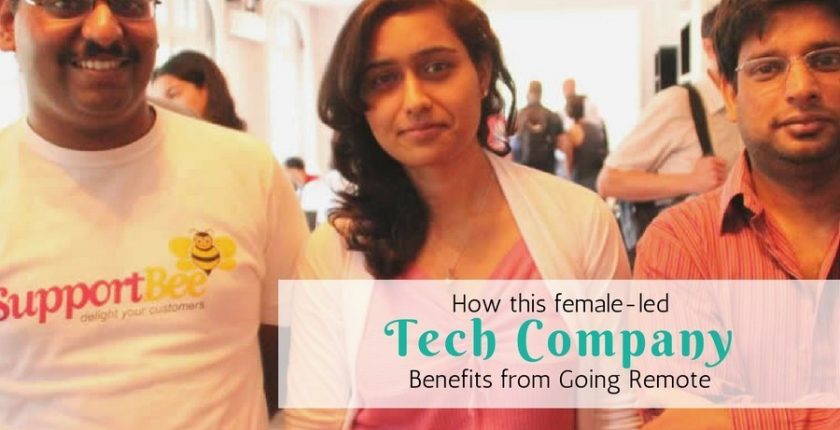
How This Female-Led Tech Company Benefits From Going Remote
Going from traditional bricks and mortar to a distributed remote team has been a win-win for this innovative SaaS company.
Established in 2012 and proudly known as the easiest helpdesk software on the market, SupportBee makes online customer support a breeze.
We recently caught up with SupportBee’s Founder, Nithya Rajaram, who lives and works remotely from San Diego in the United States. We talked about how she manages her remote team and how she attracts top talent regardless of their location.
“No two people are in the same location, and it is working well” she said.
“Having the ability to hire talented people from anywhere means we are not constrained to a particular location or competing directly for talent with other companies hiring there.”
“Our expenses would be a lot higher and attracting the best people would become a lot more difficult if we had to do that.”
Nithya has also noticed a trend with some of the best tech talent choosing to travel, or relocate to more affordable areas to live, like South America.
“They can do that when they work remotely, so it’s a win-win situation.”
When hiring new staff, SupportBee first ensures the applicant has sufficient internet speeds and bandwidth to meet demands. The company even offers to pay for co-working spaces for some employees if working from home is not an option.
Job candidates join one of SupportBee’s existing developers for a peer programming session, testing their skills with a task they are likely to come across on the job.
“It is two or three hours long, long enough to know if they can commit to concentrating on a task and solving a problem. And it gives our team member a good idea of whether or not they can do the job effectively,” Nithya explains.
Candidates who pass the screening test are then employed on a one-month trial basis. Using team collaboration app Flowdock, new recruits are quickly introduced to the rest of the team and take part in a presentation from the founder on day one.
Nithya said it’s a process that works well, but it took some trial and error to get it right.
“We have made mistakes in the past hiring the wrong people, it’s an expensive mistake to make and you quickly realise when it’s not working.”
“But we fine-tuned the process, adding the peer programming sessions and one month trial and we involve the entire team in every hire. Everyone gets to offer their opinion, which is important to make sure the team can gel.”

